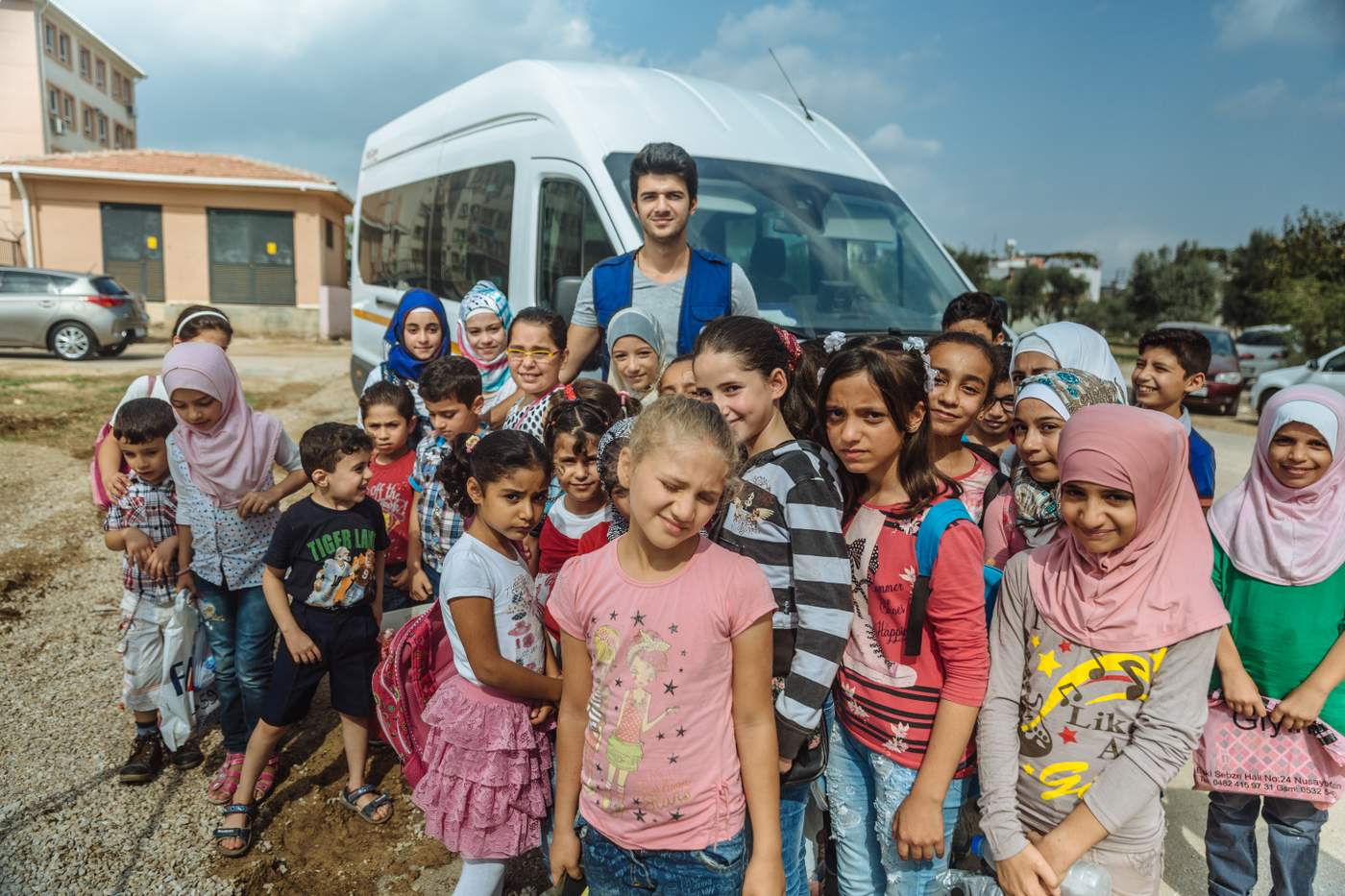"I really like going to school. I like it even more now that I am going there on the school bus," said Ranin (right), a first grade student, who is happy having a badge with her photo on it.
Located 80 km from Amman, Jordan's Azrap Camp houses 53,901 people of whom 37% of them are school-age children. The camp area is almost desert with harsh weather all year round. In winter, temperatures can drop below zero degrees Celsius, and in summer they reach up to 45 degrees.
The schools in the camp are run by the Jordan Ministry of Education with the support of the United Nations Refugee Agency.
Regardless of the weather, children were walking up to two kilometres to school in all weathers. Because of overcrowding, girls and boys go to school at different times. Girls walked to school in the early morning, when it is extremely cold in winter, and boys walked there in the middle of the day, experiencing summer's highest temperatures.
Families were worried about letting their children walk such long distances, especially if they were not able to walk with them.
Five prefab cabins surround a small concrete yard with a wire fence, which together make up Basirma Camp's high school for Syrian refugees. Basirma camp is located north of Erbil city in Iraq.
With extremely limited resources, the students dedication is the only motivation for the school manager, Luqman Mohammed Saeed, to keep the school running .
When Luqman (right) took over the school six months ago, he faced teaching staff shortages, almost no electricity and no technology equipment.

Luqman recruited teachers from the Syrian refugee population. He also convinced a local contractor at the camp to provide a few hours of free electricity to the school each day.
“It is still not sufficient but it is better now,” said Luqman.

Abbas Ibrahim (right) teaches geography and history.

“Today, we are studying volcanic eruptions as one factor in the process of mountain formation,” said Abbas.
Then, he turned to the students and asked, “Who can give an example of this type of mountain?”
“Mount Fuji in Japan!” replied one student.
“Jabal al-Tair Island mountains in Yemen!” said another.
Eight of the thirteen senior students have been admitted to universities in the Kurdistan Region of Iraq.
“This school offers a better future for these teenagers and protects many of them from dangers like early marriage and irregular migration,” said Abbas.


